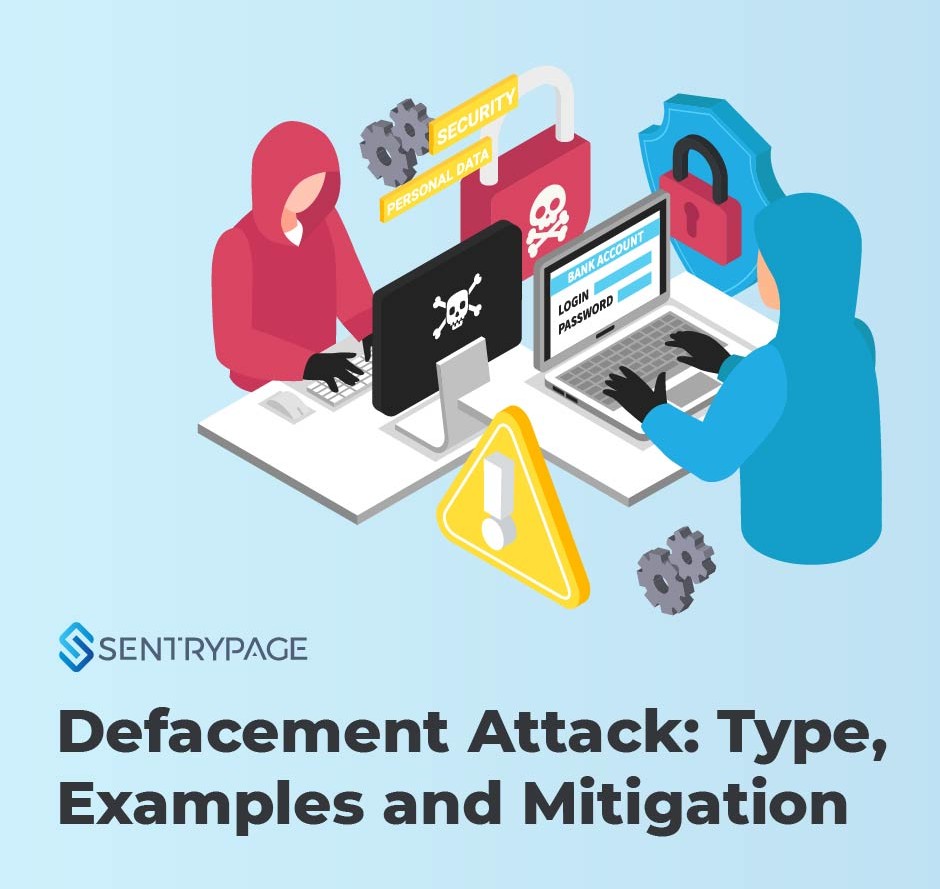
Defacement Attack: Type, Examples and Mitigation
Defacement attacks are a type of cyber attack that involve modifying the content of a website or other digital platform. The goal of a defacement attack is often to spread a message or gain attention, rather than to steal information or cause other types of damage. In this article, we will explore the different types of defacement attacks and provide some examples of real-world incidents.
Defacement Attack Definition
A defacement attack is an attack that involves modifying the content of a website, often by replacing the original content with a message or image. Defacement attacks can be carried out by hackers, activists, or other individuals or groups with a variety of motives. The goal of a defacement attack is often to spread a message or draw attention to a cause, rather than to steal information or cause other types of damage.
Types of Defacement Attacks
There are several different types of defacement attacks that hackers and other attackers may use. These include:
Simple Defacement: This type of attack involves replacing the content of a website or other digital platform with a simple message or image. The message may be political, social, or simply meant to draw attention to the attacker's skills.
Political Defacement: Political defacement attacks involve replacing the content of a website with political messages or images. The goal of these attacks is often to spread a particular political message or to support a particular political cause.
Islamic Defacement: This type of attack involves replacing the content of a website with messages or images that promote Islamic extremist ideology. The goal of these attacks is often to spread a particular extremist message or to support a particular extremist group.
Hacking Group Defacement: Hacking group defacement attacks involve replacing the content of a website or other digital platform with messages or images that are associated with a particular hacking group. The goal of these attacks is often to promote the group's activities or to show off their skills.
Redirect Defacement: Redirect defacement attacks involve redirecting a website's visitors to a different website, often one that contains malware or other malicious content.
Examples of Defacement Attacks
Here are some real-world examples of defacement attacks that have taken place in recent years:
The Syrian Electronic Army: The Syrian Electronic Army is a hacking group that has carried out a number of defacement attacks against websites around the world. In one attack, they defaced the website of the New York Times, replacing the content with a message that criticized the paper's coverage of the conflict in Syria.
The ISIS Defacement Campaign: ISIS has carried out a number of defacement attacks against websites around the world. These attacks have included replacing the content of websites with messages promoting ISIS ideology or featuring images of the group's flag.
The Turkish Defacement Campaign: In 2017, a group of Turkish hackers carried out a defacement attack against a number of websites in the Netherlands. The attackers replaced the content of the websites with messages that criticized the Dutch government.
The Hacktivist Defacement Campaign: In 2018, a group of hacktivists carried out a defacement attack against the website of the Indian government's Ministry of Defense. The attackers replaced the content of the website with messages and images that were critical of the Indian government's policies.
Defacement Attack Mitigation
Defacement attacks can be a serious threat to the security and reputation of your website. Fortunately, there are several best practices you can follow to mitigate the risk of defacement and protect your online presence.
Keep Your Software Up-to-Date: One of the easiest ways for attackers to deface your website is by exploiting vulnerabilities in your software. To reduce this risk, make sure you keep your software up-to-date with the latest security patches and updates.
Use Strong Authentication: Weak passwords and authentication mechanisms can make it easy for attackers to gain unauthorized access to your website and deface it. To mitigate this risk, use strong passwords and implement two-factor authentication (2FA) wherever possible.
Monitor Your Website: Regularly monitoring your website for defacement can help you detect attacks early and take quick action to restore your site. Consider using website monitoring services or change detection tools to stay on top of any unauthorized changes to your website.
Conclusion
Defacement attacks are a type of cyber attack that involve modifying the content of a website. They can be carried out for a variety of reasons, including political or social activism, hacking group promotion, or simply to gain attention. Defacement attacks can be damaging to the reputation of the victim, but they generally do not involve stealing sensitive information or causing other types of damage. It is important for website owners.
